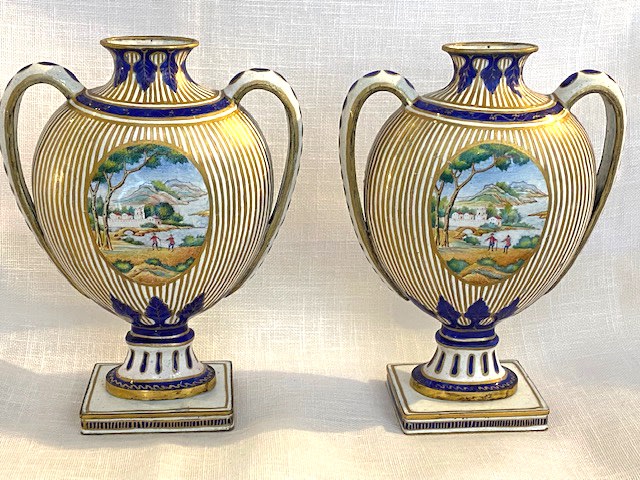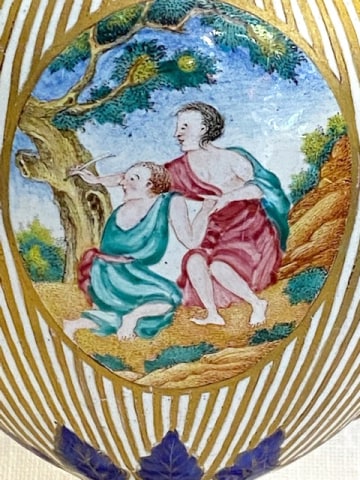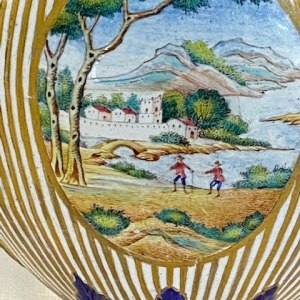A Pair of Rare Chinese Export Canton Enamel Vases, Qianlong (1736- 1795)
Height: 15.5 cm; 6 ins.
BH23
BH23
Further images
Of small size, well painted with oval panels to each side, one enclosing two figures in drapes, one enclosing figures standing in a European landscape, reserved against a gilt and...
Of small size, well painted with oval panels to each side, one enclosing two figures in drapes, one enclosing figures standing in a European landscape, reserved against a gilt and blue striped ground.
Provenance
From the estate of Henry Lane Eno (1871-1928), then by descent to the current owner.
Literature
Based on a Duesbury Derby porcelain prototype. An almost identical Canton enamel example can be seen in the collection of the Victoria and Albert Museum, London (acession number: FE.45-1983).
The Victoria and Albert museum dates their Canton enamel urn from 1780 to 1785.
Quote from the Victoria Albert Museum:
'The technique of enamel painting on copper was first developed at the imperial workshops in Beijing during the Kangxi reign (1662- 1722), possibly due to the influence of the Jesuit missionaries working at court. A layer of enamel was applied on the copper surface and fired; the coloured ground was then painted with polychrome enamels and the object fired for the second time.
Enamelling on copper began to be produced in Canton at the end of the 17th century, both for the domestic and export markets. This vase, made by special order for European clients, imitates English porcelain models produced at the Chelsea-Derby factory by William Duesbury, active between 1770 and 1784, from designs by Boreman and Asker.
Neo-classical shapes were especially popular after 1779; Chinese copies were presumably made in about 1780-1785. The landscape subject on this example was probably inspired by the views of the Derbyshire countryside that were painted on the English porcelain originals; the figures in classical dress were instead a reflection of the new taste for neoclassical designs.'








